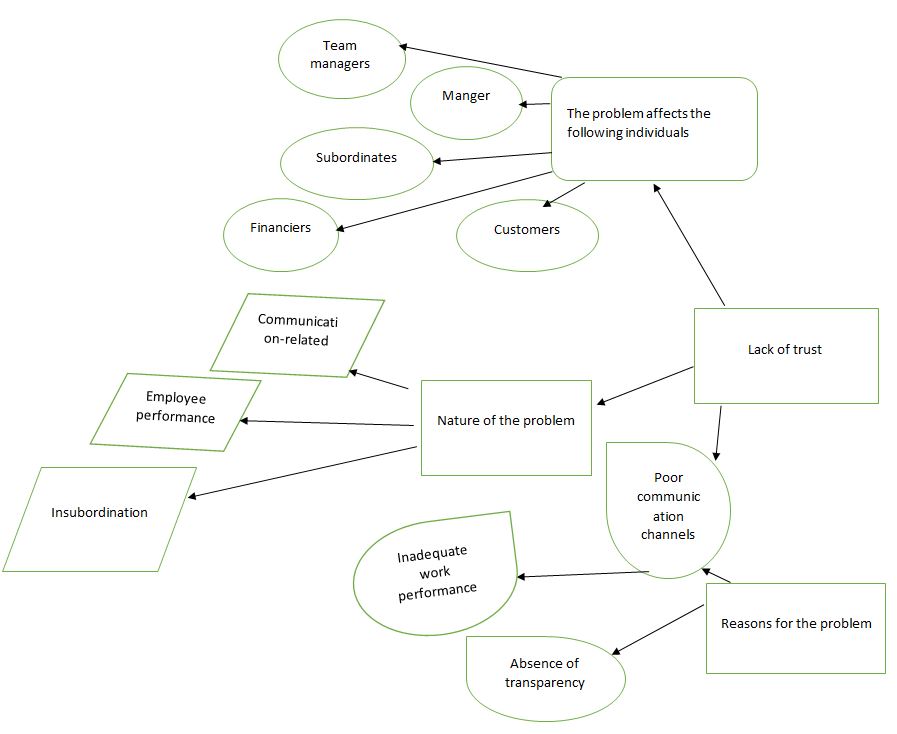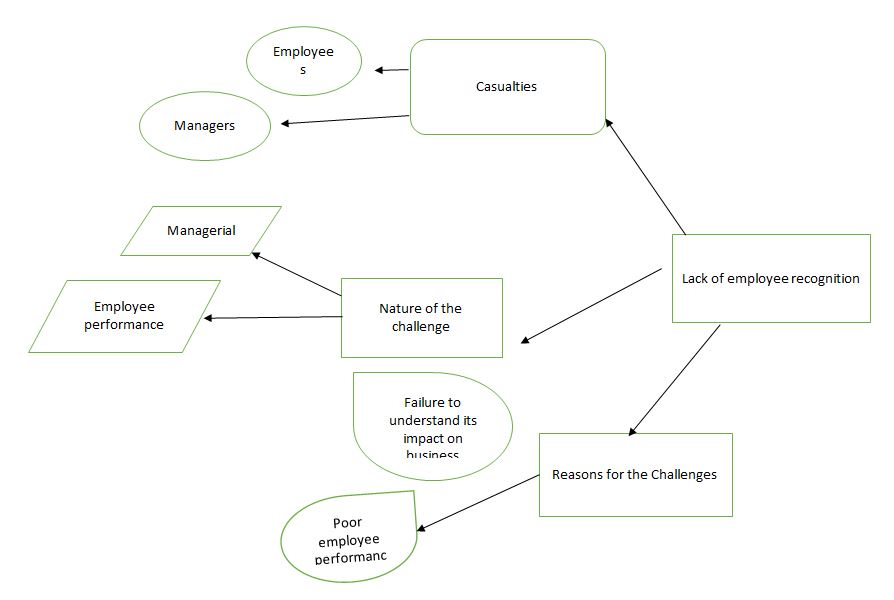The workplace conflict between employees and supervisors stems from a power imbalance identified as the source of the conflict. This can be attributed to a need for more understanding and trust between those with different levels of authority. It is essential to identify the root cause of the conflict and create an environment of open communication, mutual respect, and clear expectations to resolve the issue. This will help bridge the gap between colleagues, employees, supervisors, and leaders in the organization, strengthening the relationships between all parties and creating a more positive workplace environment. Ensuring all parties involved are actively engaged in the process and understanding their roles and responsibilities increase success in conflict. It is also important to create an environment of trust, collaboration, and respect to resolve the conflict positively and productively.
Challenges that Organizations Face between Employees and Employers
Communication between employees and supervisors can severely hinder the productivity and efficiency of a workplace. When employees and supervisors fail to communicate effectively, misunderstandings and mistrust can arise. This can lead to a lack of respect between the two parties and even create a hostile environment. Employees may feel their needs and concerns need to be heard or addressed openly and honestly. Supervisors may also need to e made aware of their employees’ struggles, as they may need all the information, they need to make informed decisions (Hamouche, 2021). Employers can address and resolve workplace issues through proper communication with their subordinates. Improving communication between employees and supervisors is essential to ensure the workplace is safe and productive. This is achievable through open dialogue, frequent feedback, and the establishment of trust and mutual respect. Improving communication helps both parties to work together to ensure the workplace is a positive and successful environment.
Trust between supervisors and employees is essential for a successful work environment. When there is a lack of trust, supervisors are overly critical of their employees and do not believe they can do their job to the best of their ability. This causes resentment and frustration among employees who feel they are not being given the respect or recognition they deserve. To improve the trust between supervisors and employees, supervisors should provide clear expectations and guidelines and give employees the autonomy to make decisions. Additionally, supervisors should give employees regular feedback and praise to show they are valued and appreciated. When trust is established, employees are more likely to have a positive attitude toward their work and be more productive (Contreras et al., 2020). Establishing trust between supervisors and employees is crucial to creating a successful work environment.
Employees make important contributions to the organization and are essential for its success. Unfortunately, supervisors often fail to recognize and acknowledge these contributions. This lack of recognition can demoralize employees, making them feel undervalued and unappreciated (Contreras et al, 2020). If supervisors make an effort to recognize employees’ valuable contributions, it will not only boost their morale but also improve productivity and performance. Employees should be given recognition for a job well done, and their efforts should be acknowledged and appreciated. This will create a positive and encouraging work environment and motivate employees to strive for excellence.
Supervisors should provide employees with clear expectations and goals for them to succeed. Employees may feel uncertain and confused without this guidance, leading to poor performance. Supervisors need to communicate expectations and objectives clearly and concisely to ensure that employees understand their expectations. This will help create an environment of accountability and ensure that employees are working towards the same goals. Supervisors often require employees to work long hours and do not provide the resources or support to manage their workload adequately. This leads to burnout and decreased productivity.
The Two most Outstanding Challenges
The two problems that stand out to me from this list are the need for more trust between supervisors and employees and recognition for employee contributions. These two issues are at the root of the conflict. Trust between supervisors and employees is a major issue because it prevents the two parties from working together effectively. Supervisors who do not trust their employees are less likely to listen to their ideas and concerns and be open to their feedback. This leads to a breakdown in communication and further exacerbates the conflict.
On the other hand, the lack of recognition for employee contributions is also an important issue because it impacts employee morale and motivation. Supervisors who do not recognize the importance of their employees’ contributions are less likely to reward them for their hard work and effort. This can lead to frustration and resentment, further eroding the relationship between supervisors and employees. Focusing on these two key issues makes it possible to address the underlying causes of the conflict and improve the relationships between supervisors and employees. By working together to build trust, understanding, and appreciation, it is possible to create a more positive work environment where everyone feels valued and respected.


References
Contreras, F., Baykal, E., & Abid, G. (2020). E-leadership and teleworking in times of COVID-19 and beyond: What we know and where do we go. Frontiers in Psychology, 11, 590271. Web.
Hamouche, S. (2021). Human resource management and the COVID-19 crisis: Implications, challenges, opportunities, and future organizational directions. Journal of Management & Organization, 1-16. Web.
